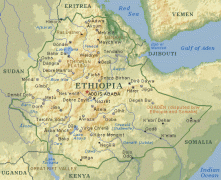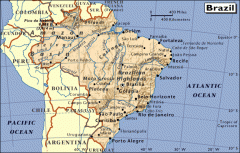Home-baked boutique coffee (5) Harald, Ethiopia
As the hometown of coffee, Ethiopia occupies a pivotal position in the world coffee field because of its superior natural conditions and long history of coffee production and drinking.

Coffee was first discovered in the Kafa region of southern Ethiopia 1, 500 years ago, and there are still a large number of wild primitive coffee trees in the country, and many farmers have coffee trees in their courtyards, where coffee is called "buna" or "buni". To this day, coffee still retains the most primitive and traditional method of making coffee-using a long pot to boil freshly fried and mashed coffee beans. People in Egypt also have a deep affection for coffee, and coffee is definitely the first choice for hospitality.
For more than 1000 years, Ethiopian coffee, with its most authentic and purest native species, coupled with its unique geographical environment, has been nurtured by a simple heart and industrious hands, constantly providing beans with unique flavor and personality for the boutique coffee industry. There are two kinds of Mingjia alone-in addition to the previously mentioned Idido, this classic Harald is also full of flavor and intriguing.
Characteristics of beans in producing areas
Production area: Hararge
Country: Ethiopia
Altitude: over 2000 m
Venue: Dire Dava
Mode of production: planting by small farmers
Variety: Ethiopian native species
(it is divided into long beans, short beans and fruit according to the shape of beans.)
Treatment method: natural drying method
Hand picking
Level: Grade 4 (highest level)
Flavor characteristics: rich chocolate aroma in the delicate and fragrant aroma, blueberry aroma flashing, bright acidity, high mellow, chocolate aftertaste
Harald is produced in the Hararge region southeast of the Egyptian capital Addis Ababa. This area is typical of the origin of mocha beans, according to the shape of beans can be divided into long beans (longberry), short beans (shortberry) and beans (peaberry), all with a strong chocolate flavor and good mellow, even in the long aftertaste of chocolate can still be clearly felt. All the beans in this area are dried. After picking, the ripe coffee fruit is placed directly in the sun to dry the peel and then remove the peel, which maintains the high mellowness and rich aroma of the coffee beans, even with a longer finish. Compared with the washed emerald green beans, Harald's beans are of different sizes and yellowish green, and there are more defective beans, and occasionally there are magazines such as stones and wood chips, but these do not affect Harald's excellent performance in the cup. it even makes it have a unique "rough and wild primitive flavor"-not bad! Harald's aroma in addition to chocolate and citrus aromas, there is always a special aroma in other coffee is very rare.
It is worth mentioning that the beans dried in Egypt are exported as Grade4 at the highest level in the classification, while the first-grade beans of washed beans are often exported to Grade2 in order to avoid tax, especially Harald, because of its slightly crude appearance, so if you want to drink good coffee, you must not "judge beans by their appearance", depending on their performance in the cup.
Cup review record
Product name: Ethiopia Harar Cup Review date: September 21, 2009
Baking degree: city+ Baking date: September 21, 2009
Country of origin: Ethiopia region: Hararge Farm: smallholder cultivation
Grade: grade4 processing method: natural drying mark: orgnic
Taste evaluation:
Aroma, acidity, bitterness, sweetness, balance, mellow, finish and rhyme.
43344555
Comprehensive evaluation:
The delicate and rich aroma exudes chocolate aromas, blueberry aromas flicker, obvious acidity, high mellow, rich and deep taste, and the bitter sweetness of chocolate can still be felt in the long finish.
The deep baking of full city used in espresso blending can add its delicate aroma and mellowness.
Flavor characteristics: blueberry aroma, high mellow, chocolate bitter sweet
Important Notice :
前街咖啡 FrontStreet Coffee has moved to new addredd:
FrontStreet Coffee Address: 315,Donghua East Road,GuangZhou
Tel:020 38364473
- Prev

Home-baked boutique coffee (4) Yega Xuefei, Ethiopia
When it comes to coffee, friends who like coffee all know the name of Ethiopia, and when it comes to Ethiopia, Yega Xuefei is a highly related word for her rich fruit and flower fragrance, bright acidity and strong chocolate flavor have won the favor of millions of coffee lovers. Yega Xuefei is actually southern Ethiopia in English yirgacheffe
- Next

Home-baked boutique coffee (VI) Brazil
Brazil, once and still the world's largest coffee producer, has made coffee as a national treasure as its samba and football with its huge output. Brazil produces a lot of coffee, but because its varieties include both Arabica and Roberta, and many farms are located in the plains below 1000 meters above sea level, they use modern mechanized operations.
Related
- What is the meaning of lactic acid fermentation with coffee bean treatment?
- How to judge the state of foam by sound?
- How does the latte pull out the unicorn pattern? Come to get for a little trick to improve the flower pull!
- Will flower pulling affect the taste of the latte?
- Do you know the history of coffee?
- The difference between honey treatment and sun washing what is raisin honey treatment?
- What kind of milk can a novice use to make coffee foam to keep the foam longer? The correct method and skills of milking tutorial sharing
- Why do washed coffee beans taste sour? Flavor characteristics of washed Coffee
- Introduction to the skill of how to practice the size and height of water injection around the circle of hand-brewed coffee
- How do beginners practice coffee flower drawing from scratch?

